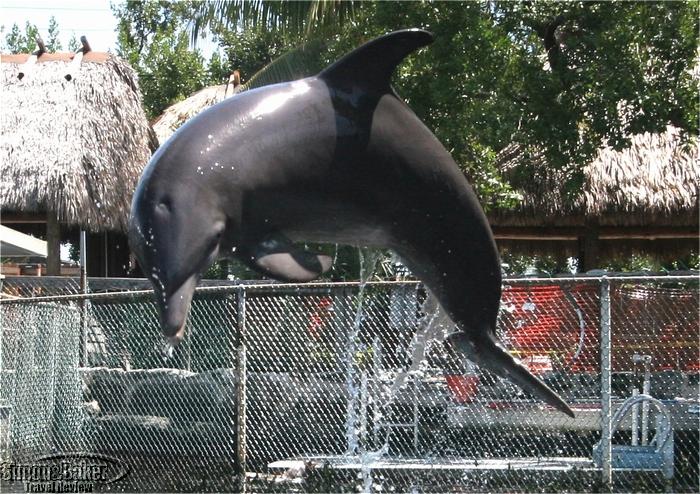
by Editor | Sep 1, 2007 | Florida, North America, Simon and Baker Travel Review, United States
What do you do when a 450-pound animal that moves better, faster and far more gracefully than you do races directly at you at (seemingly) the speed of sound? If you’re participating in a Natural Dolphin Swim at Dolphins Plus like we were, count yourself lucky, make sure your hands stay tucked away and keep swimming as fast as you can. We felt lucky because sometimes the dolphins find visitors uninteresting or the sea mammals are not in the mood for company and ignore visitors swimming in their salt water pen. This means all the effort and excitement to see the dolphins is wasted when they just stay in a corner or swim away making it difficult to enjoy the unstructured swim. In our case, the three dolphins in the pool enjoyed playing with us, making our swim a success.

by Editor | Aug 1, 2007 | Simon and Baker Travel Review
Lucy’s Legacy Details Features Other Exhibit Review Audio Tour I especially appreciated the downloadable exhibit audio podcast, which was very informative and easy to use. I kept it on my player for future reference. It was available at no cost from the Houston Museum...

by Editor | Jul 1, 2007 | Africa, Lower Zambezi, Simon and Baker Travel Review, Zambia
Located downstream from Lake Kariba on the northern bank of the Zambezi River, the Lower Zambezi National Park is the most recent of Zambia’s parks. Established in 1983, immediately across the river from Zimbabwe’s world famous Mana Pools, it is still an area of mainly untouched wilderness. The park stretches for 75 miles (120 kilometers) between the Chongwe River to the west almost to the confluence of the Luangwa River to the east, and extends 20 miles (32 kilometers) inland to the Zambezi escarpment. Although the park covers an area of 1,580 square miles (4,092 square kilometers), the spectacular backdrop of the steep escarpment acts as a natural barrier to most species, concentrating most of the game’s activity near the edge of the river.
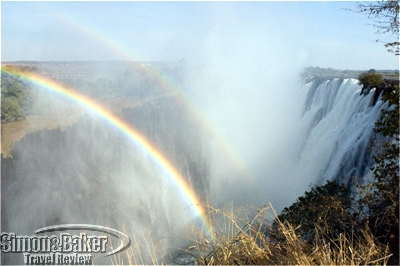
by Editor | Jul 1, 2007 | Simon and Baker Travel Review
While traveling through the game parks of Zambia, conversation often turned to favorite lodges and camps. Invariably, someone brought up Tongabezi. Those who had visited were enthusiastic; those who had not were wistful. Guides and management personnel spoke of “Tonga” with respect. When I arrived at Tongabezi, it was immediately clear how the lodge had come to be a standard by which Zambian luxury lodges and camps were measured. The instant the car pulled in front of the reception cottage, a choir of four staff members appeared to sing a joyous welcome. One of the chorists, Alvin, was introduced as my personal valet. As the only staff member allowed in my cottage, he was responsible for all my in-room needs. He escorted me through a meticulously tended grove of ebony trees overlooking a panoramic bend of the Zambezi River. The view was magnificent, the environment relaxed and utterly serene.
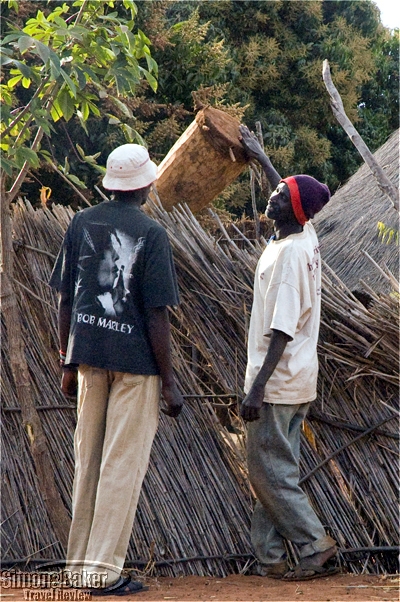
by Editor | Jul 1, 2007 | Simon and Baker Travel Review
Located high on a hill overlooking endless expanses of African bush, the Stanley Safari Lodge was a secluded enclave of timeless luxury worlds apart from the shrill urbanism of nearby Livingstone. Its convenient proximity to the town and Victoria Falls made it an ideal location to visit the area. It was a gentle place to re-enter the modern world at the end of my trip to the remote wilderness of Zambia’s national parks.

by Editor | Jul 1, 2007 | Africa, Lower Zambezi, Simon and Baker Travel Review, Zambia
The Sausage Tree Camp whimsically announced itself as the motorboat taking me down the Zambezi River approached its landing dock. Pristine conical Bedouin tents peering through the extravagant canopy of riverine forest in the Lower Zambezi National Park? Indeed! The camp consisted of seven Bedouin-style circular tents discreetly positioned above the bank of the scenic entrance of the Chifungulu channel. Each tent offered complete privacy, along with a terrific view of the river and an island filled with shivering reeds where big game loved to hide. The camp’s décor was an inspired fusion of styles resulting in minimalist luxury that left the senses free to concentrate on the intense wildlife activity around and within the camp.

by Editor | Jul 1, 2007 | Africa, Lower Zambezi, Simon and Baker Travel Review, Zambia
Located on the bank of the Chongwe River, at the point where it meets the Zambezi, the Chongwe River Camp offered a panoramic view of the western boundary of the Lower Zambezi National Park. Nestled in a lush grove of winterthorn acacias, this luxurious camp was designed to blend unobtrusively into its splendid surroundings: the steep Zambezi escarpment to the north and Zimbabwe’s famed Mana Pools immediately across the Zambezi to the south. Pods of hippos filled the Chongwe like so many moving islands. Meanwhile, on the opposite bank, the park was home to a dense population of elephants and buffalos that constantly filed to the water for a drink or a bath, or came across to visit. More than once, my short walk from the common areas to my tent was delayed while an elephant ambled down the path, claiming its incontestable right of way.
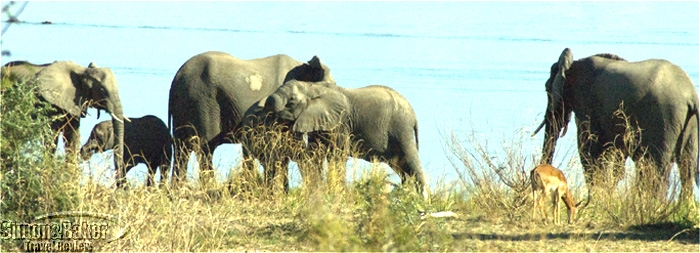
by Editor | Jul 1, 2007 | Simon and Baker Travel Review
Chiawa was my idea of what Eden should be: outstanding creature comforts, superb organization, spectacular views and constant game activity! Nestled under a lush canopy of riverine forest in the heart of the Lower Zambezi National Park, the Chiawa Camp blended so unobtrusively into its surroundings that elephants and buffalos routinely paraded within feet of my tent on their way to the river. Guest accommodations consisted of eight tents on raised wooden decks under thatched roofs. The tents were spread out across the property, set sufficiently apart to give a feeling of peaceful seclusion. All were positioned to enjoy a sweeping view of the massive Zambezi flowing a mere 100 yards away.
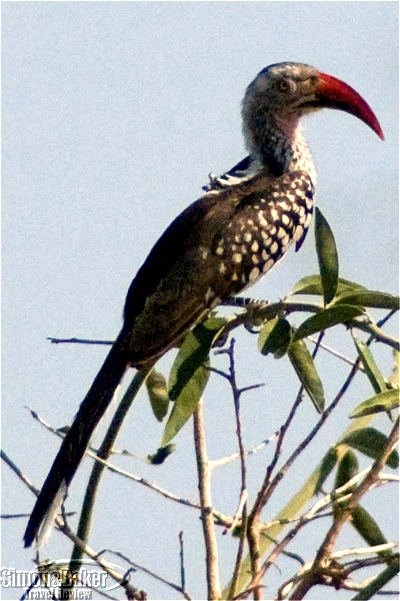
by Editor | Jun 1, 2007 | Africa, Simon and Baker Travel Review, South Luangwa, Zambia
Nkwali was located in the Game Management Area immediately across the river from the South Luangwa National Park, on a prime vantage point of the eastern bank of the Luangwa River. Discretely nestled in a grove of soaring ebony trees, the camp’s six guest chalets and bar area offered a spectacular view of the steep far bank of the river and the acacia forest that constituted the boundary of the park. On the back side of the camp, the dining area was built on a low platform overlooking a small lagoon where a variety of game frequently came to drink. Nkwali successfully coupled the casual atmosphere and intimate proximity to wildlife that only a bush camp can offer with the indulgent amenities of the best safari lodges. From a comfortable lounge chair near the bar, I spent a contented afternoon siesta time watching a herd of elephants wading in the shallow waters of the west bank of the river. I then took their cue and went for a refreshing swim in Nkwali’s swimming pool before teatime.
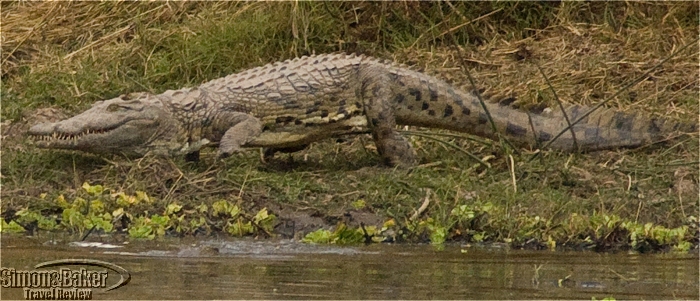
by Editor | Jun 1, 2007 | Africa, Simon and Baker Travel Review, South Luangwa, Zambia
My visit to Luwi was an exciting safari back in time! This remote bush camp located deep in the wilderness of the South Luangwa National Park consisted of four reed and thatch huts with polished mud floor and a small bar area nestled under a canopy of venerable Natal mahoganies. Luwi was a seasonal camp open only during the dry months of June through October. There were virtually no roads in this far-flung area of the park; activities were mainly on foot, lead by long-time Luwi guide Sam Nkhoma, accompanied by an armed scout. At this property, the emphasis was on identifying and following fresh tracks, as well as bird and plant identification.

by Editor | May 1, 2007 | Bonaire, Simon and Baker Travel Review
I liked Harbour Village so much the first time I stayed there, my husband and I visited the boutique hotel the following year. Sometimes a return visit can be disappointing because properties change in between visits; the room is not as nice the second time as it was the first time; weather is less favorable or other circumstances conspire to spoil the experience. To our surprise, Harbour Village was, in almost every respect, as delightful or more the second time.
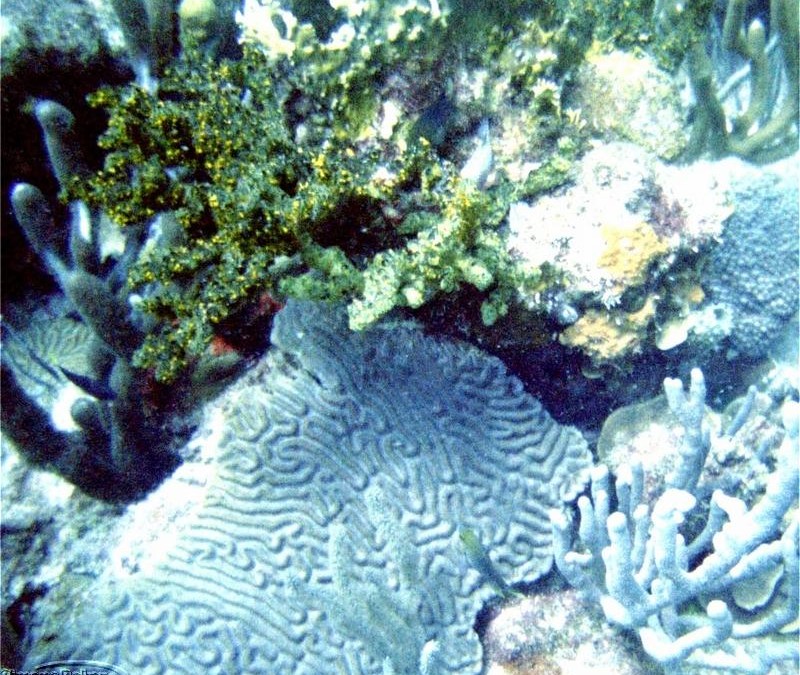
by Editor | May 1, 2007 | Bonaire, Simon and Baker Travel Review
The Great Adventures Dive center was onsite at the Harbour Village Beach Club property making it convenient for club members and guests. By far the main activity seemed to be dive courses, shore diving, and diving and snorkeling boat excursions. Snorkeling and diving on the Harbour Village beach were easy and there was a small sailboat wreck about 40 feet deep off of the beach. On several occasions we took advantage of the easy shore dive opportunities to explore the nearby wreck and Something Special reef. Other times we went on boat excursions.
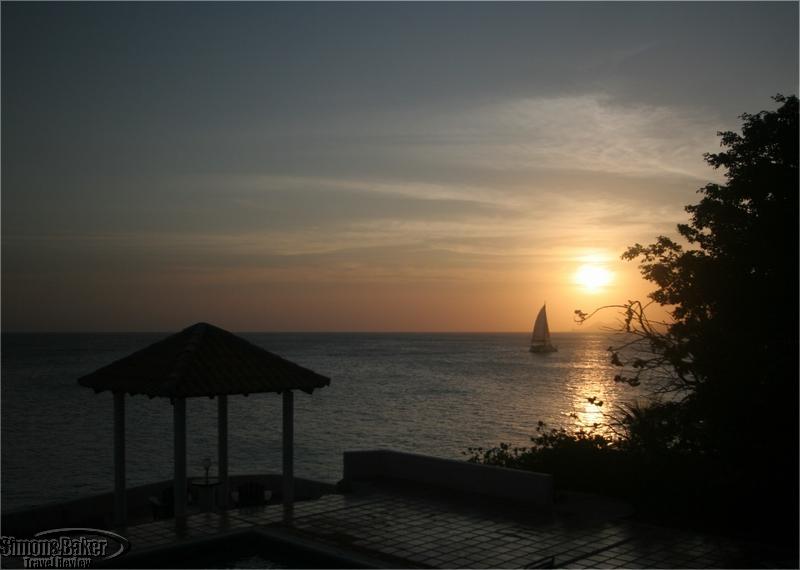
by Editor | May 1, 2007 | Bonaire, Simon and Baker Travel Review
We were delighted to discover the southern Caribbean island of Bonaire offered many accommodation options, including luxury rental villas. After a few email exchanges with Sunrentals, one of the largest rental agencies on the island, we were rewarded with last minute space in Crown Court 44A, one of their most popular rental homes and one of very few waterfront homes with WiFi. The roomy three bedroom waterfront $2 million villa was in Bonaire’s most luxurious residential neighborhood.
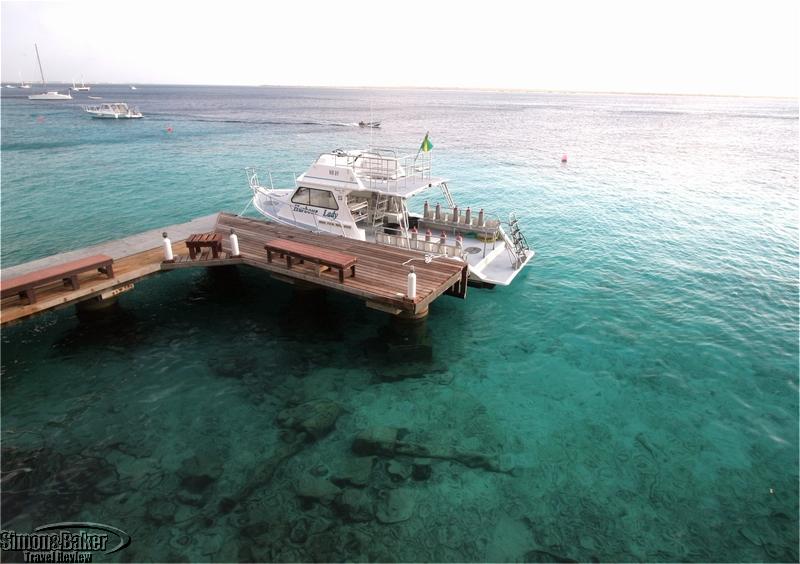
by Editor | May 1, 2007 | Bonaire, Simon and Baker Travel Review
As part of its conservation efforts, Bonaire requires all divers, even those who have visited the island in the past, to have an orientation dive with a local; and purchase a license to enter the marine park (all the sea around the island is part of the marine park). To dive in Bonaire, we had to have the required orientation. At the same time, I hadn’t gone diving since obtaining my certification and was feeling a bit anxious about diving again. Enter Buddy Dive.
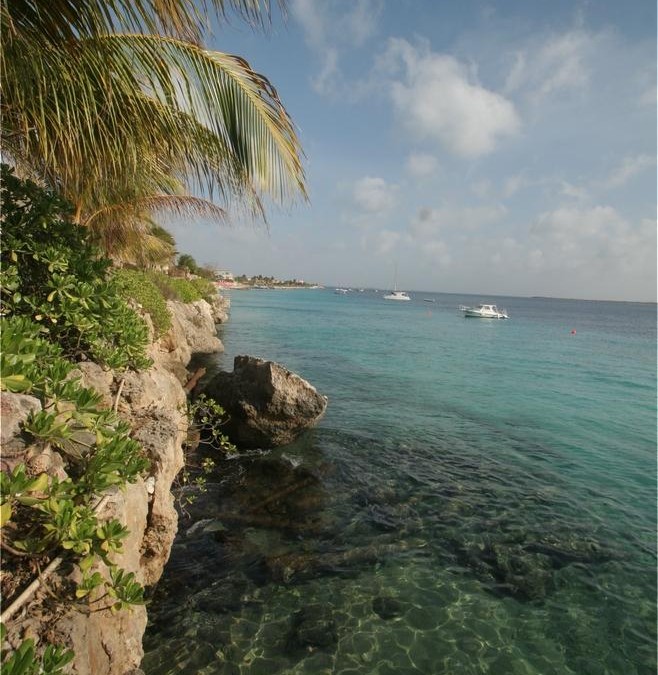
by Editor | May 1, 2007 | Bonaire, Simon and Baker Travel Review
For a small island Bonaire really packs a punch. When few spoke about ecotourism in the Caribbean, Bonaire was busy establishing marine and national parks. Island authorities still oversee those areas with care, ensuring unspoiled waters for locals and visitors alike. At the same time, although for years it has been a diving Mecca attracting countless European and United States visitors, locals have not rested on their laurels. We observed pleasant, well organized, modern operations staffed by enthusiastic divers with a professional attitude.
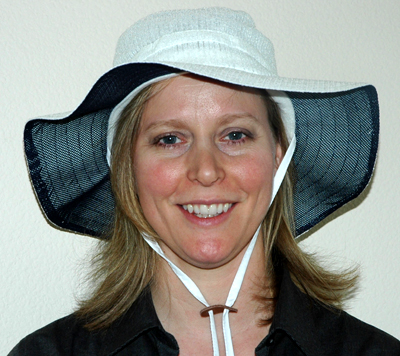
by Editor | Mar 1, 2007 | Products, Safari Gear, Simon and Baker Travel Review
With its SPF 20+ rating, this lightweight wide-brimmed hat delivered superior sun protection without sacrificing style or comfort. Its generous three-inch brim offered excellent face and neck protection, and featured a navy lining that effectively reduced glare. The hat was made of patented loose-weaved Solvarveil® fabric, a complex yarn structure touted for its superior breathability, wicking properties and the ability to block UVB and UVA rays.
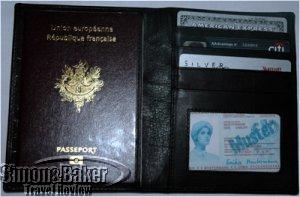
by Editor | Mar 1, 2007 | Products, Simon and Baker Travel Review, Travel Security
The U.S. State Department began issuing passports embedded with radio-frequency identity tags (RF-ID) in August 2006. These are also becoming the norm in a growing number of countries. While the new RF-ID passports are expected to enhance border security, enough concerns have been raised by computer security experts about the privacy risks they pose to the passport holder that I felt compelled to secure mine. The RF-ID Blocking Passport Wallet, made of fine leather with a protective shield inner lining to ensure the RF data cannot be accessed unless the wallet is open, provided an inconspicuous way to protect my new passport from potential data-stealing hackers.

by Editor | Feb 20, 2007 | Products, Safari Gear, Simon and Baker Travel Review
Using public restrooms can be challenging, especially while on a trip and for travelers with medical conditions or mobility limitations. Sometimes, even restrooms are an extravagance. This is the case in remote areas, while camping and in the bush. In South Africa, for example, national parks usually have rest stops including public facilities but there are no toilets in the bush.
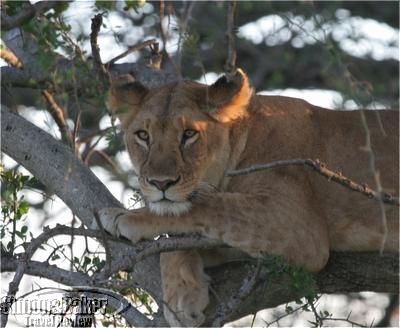
by Editor | Feb 1, 2007 | Simon and Baker Travel Review
The largest country in East Africa, Tanzania is home to 36 million people. About half the population is Muslim (45 percent), and the other half is Christian (45 percent). The remaining 10 percent have indigenous beliefs. Although we heard about plans to relocate the population to urban areas and increase the size of parks for ecotourism and hunting, the majority of the population today, 80 percent, work in agriculture in rural areas. Non Africans only represent one percent of the population.
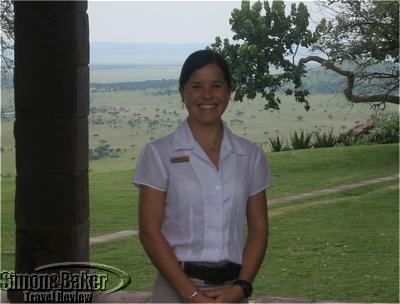
by Editor | Feb 1, 2007 | Africa, Serengeti, Simon and Baker Travel Review, Tanzania
It was marvelous to be in the Grumeti Reserves in the famous Serengeti, miles from anywhere, and enjoy a new and handsome, well appointed world class spa offering on site and in suite treatment options at the Sasakwa Lodge and nearby Sabora Plains Tented Camp. We enjoyed excellent deep tissue massages, a facial and a couple’s treatment that left us walking on air.
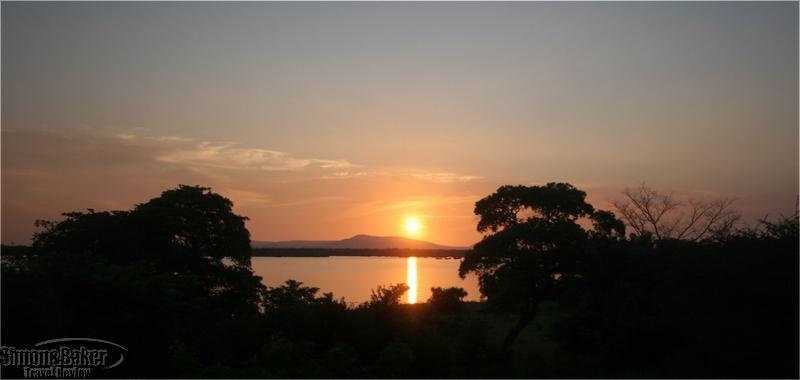
by Editor | Feb 1, 2007 | Africa, Selous, Simon and Baker Travel Review, Tanzania
Chomp, chomp, chomp … just before dawn on our first night at Selous Safari Camp we woke to persistent chewing so close it seemed to be next to our bed. Hesitant to disturb the chewing beast, we remained sitting and listening intently until the dark of the night morphed into a soft gray. Eventually we peeked out of the folds of our tent to see the profiles of several huge animals grazing contentedly. We continued listening as the sound of hippos feeding faded toward the still water of the nearby lake. Moments like these are the reason we travel long distances across land and sea in search of game viewing experiences.

by Editor | Feb 1, 2007 | Africa, Serengeti, Simon and Baker Travel Review, Tanzania
Named Sasakwa for a local chief who used to live on the hill on which the lodge is located, the stately family friendly property offered many advantages for luxury oriented game viewing enthusiasts. In spite of its remote location in the Western Corridor of the Serengeti-Mara ecosystem, bordering the Serengeti National Park in northern Tanzania, Sasakwa offered guests a level of luxury and many creature comforts other properties only dream of having. Sometimes small touches say as much as the widely advertised features. We were impressed with the fresh roses in our cottage, fresh flowers throughout the property and freshly baked butter welcome cookies in our well stocked minibar.
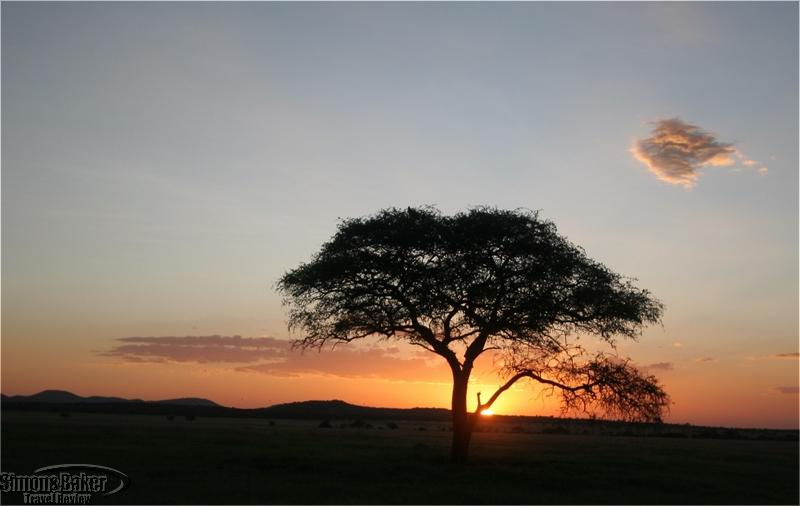
by Editor | Feb 1, 2007 | Africa, Serengeti, Simon and Baker Travel Review, Tanzania
When I think of Sabora I remember chilly mornings followed by hot days, smiling and friendly staff, delicious and well served food, exclusive and rewarding game viewing, a homey informal ambiance and a magnificent tent experience. I reminisce about a perfect day spent in the Tanzania plains with Aloyce, our indefatigable, affable and competent local guide, viewing cheetah in the morning and tree climbing lions in the afternoon; followed by a romantic gourmet candlelit dinner for two accompanied by brutally cold Krug champagne.
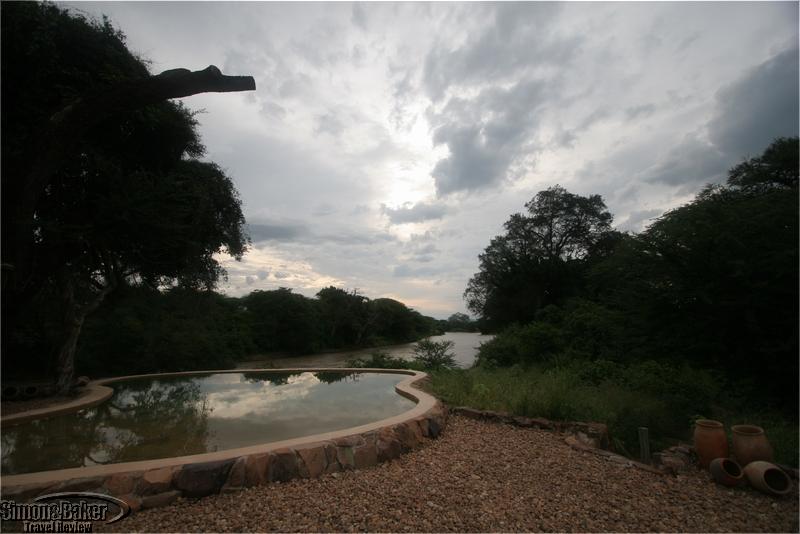
by Editor | Feb 1, 2007 | Africa, Ruaha, Simon and Baker Travel Review, Tanzania
We found Jongomero, named for the He He tribe’s word zongomero which means great wilderness, in a remote corner of Ruaha National Park, one of Tanzania’s fenceless parks dedicated exclusively to game viewing. Described as the “ultimate wilderness” by property manager Greg du Toit, the small luxury tented camp was perched on the edge of the Sand River. Since there were no other camps for many miles, Jongomero guests enjoyed almost exclusive access to that part of Ruaha.
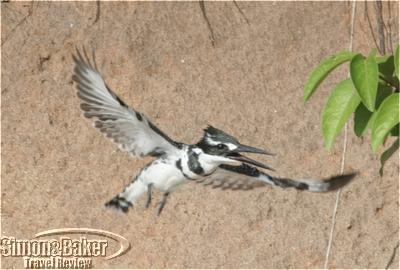
by Editor | Feb 1, 2007 | Africa, Selous, Simon and Baker Travel Review, Tanzania
A two hour morning flight from Ruaha National Park on a Cessna 13-seat plane found us at the Mtemere airstrip, a half hour’s boat ride from Selous Impala Camp. Musa our guide for the duration of our stay, and a boat driver greeted us at the airstrip. After brief introductions and the customary jambo greeting in Swahili we walked to the small motor boat on the Rufiji River banks on which we made our way to camp.
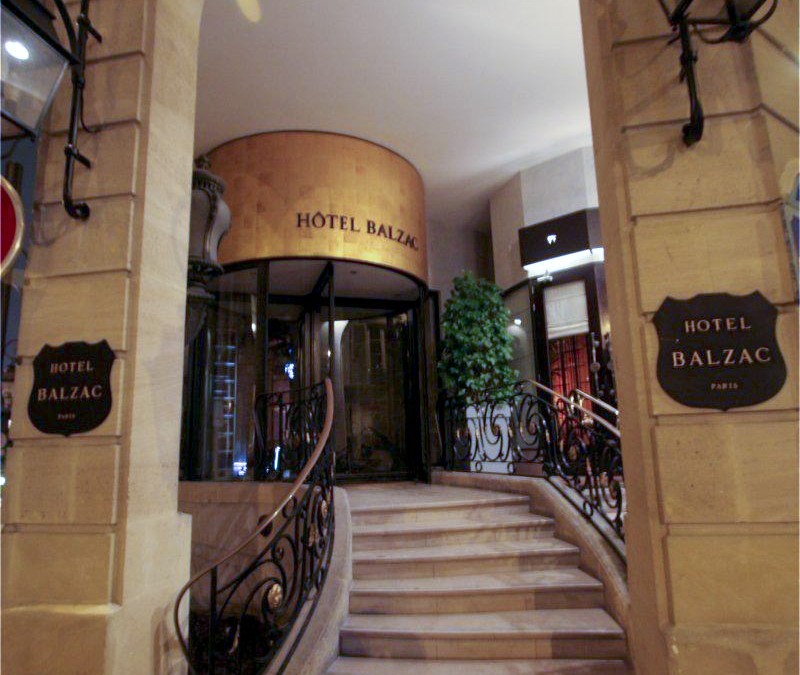
by Editor | Jan 1, 2007 | Europe, France, Paris, Simon and Baker Travel Review
We found Pierre Gagnaire’s signature restaurant tucked in a corner of the empty Belle Époque Hotel Balzac, on a quiet side street a stone’s throw from the Champs Elysees. Although there was no sign or number to indicate we had the correct address and from the outside the building looked empty, on closer inspection we discovered a promotional flyer for the restaurant in a display case.
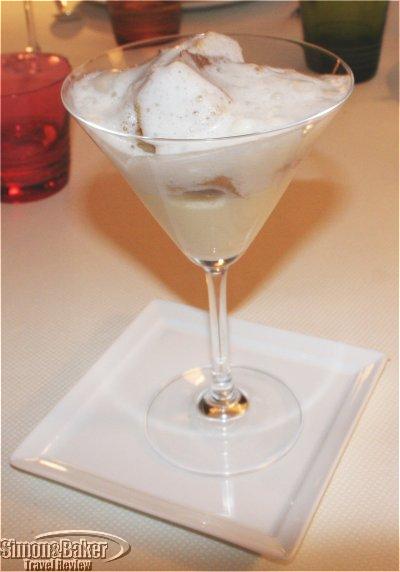
by Editor | Jan 1, 2007 | Europe, France, Paris, Simon and Baker Travel Review
Every time we dine at Helene Darroze we leave satisfied and looking forward to a prompt return. On our most recent visit to Paris, hers was the only restaurant we visited three times; three times, the meal was fantastic. Her dishes were bold, playful and full of surprises. We found the usual items available at other top tier French restaurants like truffles, scallops, duck and goose foie gras paired or prepared in unexpected ways or with exotic ingredients. Combinations that in a less experienced and gifted chef might annoy or clash, were vibrant, memorable, and perhaps most important worth repeating. Her style, though elegant and thoroughly French, is novel and packs a culinary punch. We hope it has staying power.
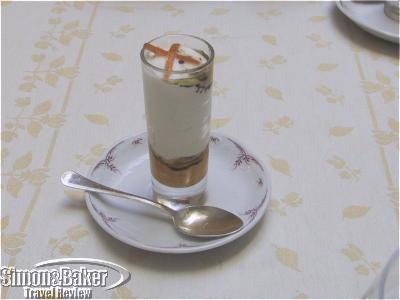
by Editor | Jan 1, 2007 | Europe, France, Paris, Simon and Baker Travel Review
Les Elysées du Vernet, Paris, France Details Common Areas Dining Food Other Review About The Chef Prior to joining Les Elysee du Vernet in December of 2002, Eric Briffard headed La Régence, the gourmet restaurant at the Plaza Athenee Hotel. Earlier in his career he...
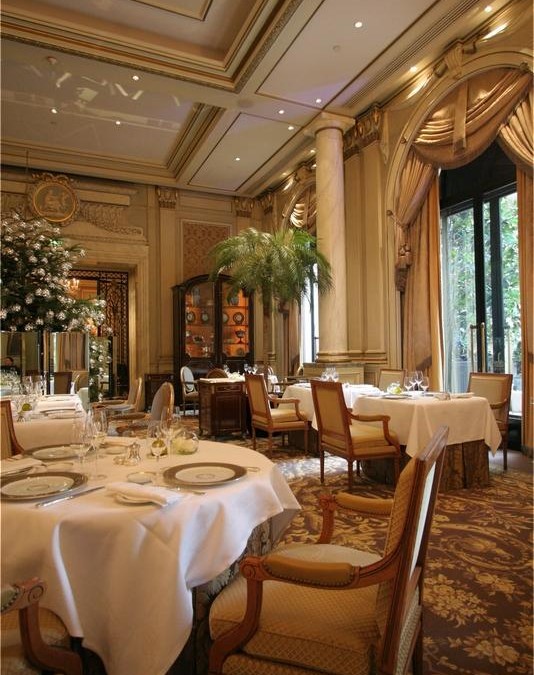
by Editor | Dec 1, 2006 | Simon and Baker Travel Review
On our last visit to Le Cinq, we ordered the tasting menu that showcased the chef’s specialties. Although the five-course tasting menu was in some respects better than the previous time we visited the restaurant, the main course was less than stellar and the service was uneven. When we first arrived, early, the service, was as we remembered. We received a warm reception and were looked after rather well. Once the dining room began to fill, there was a frenzy of activity and the service declined noticeably. At one point our glasses were left unfilled for a long stretch of time. Because the staff were busy with other guests, we had to wait for our second bottle of wine to chill while commencing our next course.
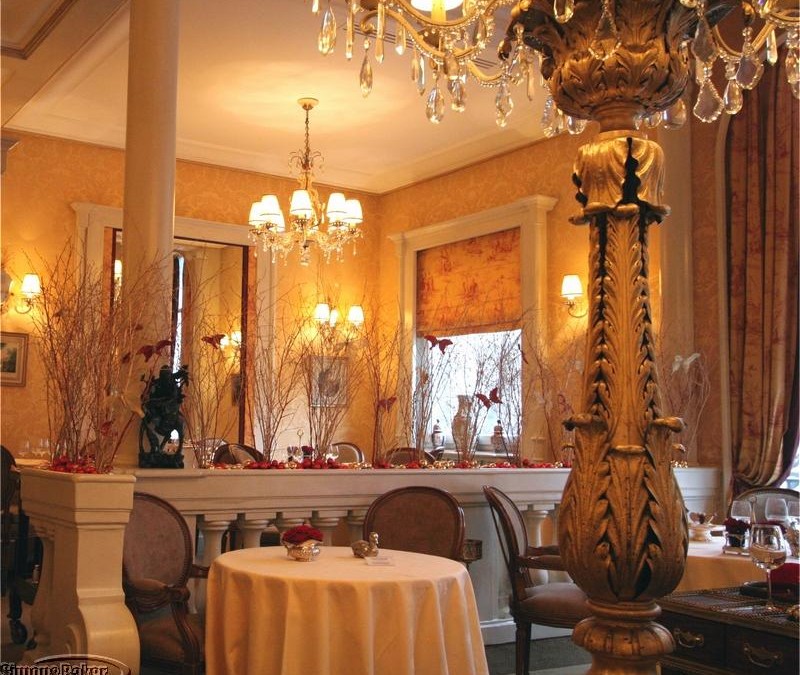
by Editor | Dec 1, 2006 | Europe, France, Paris, Simon and Baker Travel Review
A precursor of many of today’s French cuisine luminaries, Lasserre was established by entrepreneur Rene Lasserre in 1947 in a derelict warehouse. Today it is situated in the moneyed and desirable 8 arrondissement. A simple sign on the front of the building confirmed we had arrived. Inside, attentive staff members appeared as soon as we passed the threshold of the automatic doors. They took our coats and whisked us to the upstairs dining room.
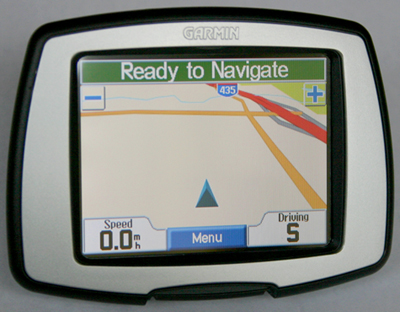
by Editor | Dec 1, 2006 | Fun Gadgets, Products, Simon and Baker Travel Review
Garmin C330 StreetPilot Details Type Of Product Other Review Battery up to 8 hours, rechargeable lithium-ion battery, includes a 12V car charger. Colors Black plastic case with a silver plastic border around the color LCD display screen. Description A street map based...

by Editor | Nov 1, 2006 | Africa, Cape Town, Simon and Baker Travel Review, South Africa
We found Tokara 60 kilometers from central Cape Town, high atop a mountain pass known as the Heights of Hell (Helshoogte in Afrikaans) named perhaps because of how tough it was to get an ox-wagon up over the pass in the old days. It was one of those strikingly beautiful, sunny and hot Cape Town days.

by Editor | Nov 1, 2006 | Africa, Kruger, Sabi Sand, Simon and Baker Travel Review, South Africa
Singita Boulders Lodge, situated within the coveted Sabi Sand Reserve just west of the Kruger National Park, offered understated luxury in a magnificent bush setting. Singita was named for the Shangaan word meaning “The Miracle.” Boulder’s Lodge, a distinctive luxury property with an elegant contemporary style fronting the Sand River for which the reserve is named, stood out for its fabulous adult oriented accommodations (children were welcome in a private section of the property); rustic elegant décor; tasty dishes; and varied activities options such as twice daily Big Five game viewing drives, cellar wine tastings, local village visits, shopping, work outs a the fitness center and spa treatments.
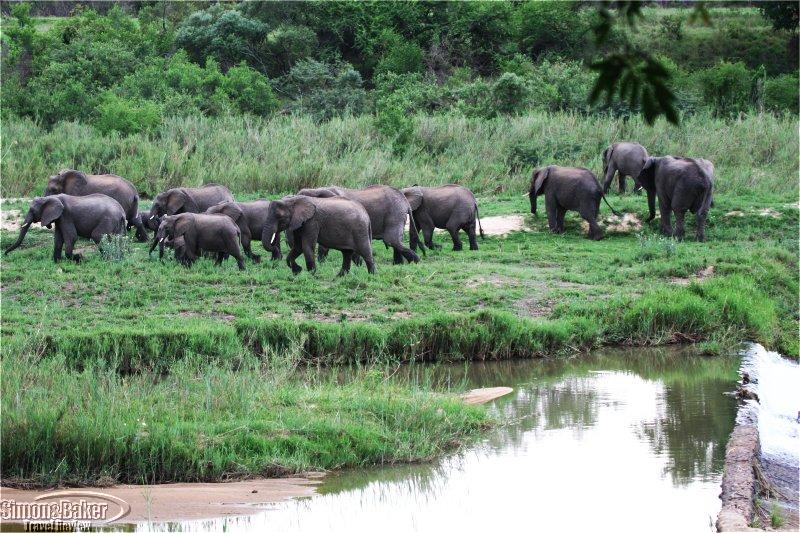
by Editor | Nov 1, 2006 | Africa, Kruger, Sabi Sand, Simon and Baker Travel Review, South Africa
A few months before we visited the property, the aptly named River Lodge in the Exeter Private Game Reserve joined the ranks of Conservation Corporation Africa (CC Africa), a well known African property management company. Although the child friendly property was still completing its incorporation into the new management company’s way of doing things, we heard about upcoming modifications and saw part of the Lodge transformation.
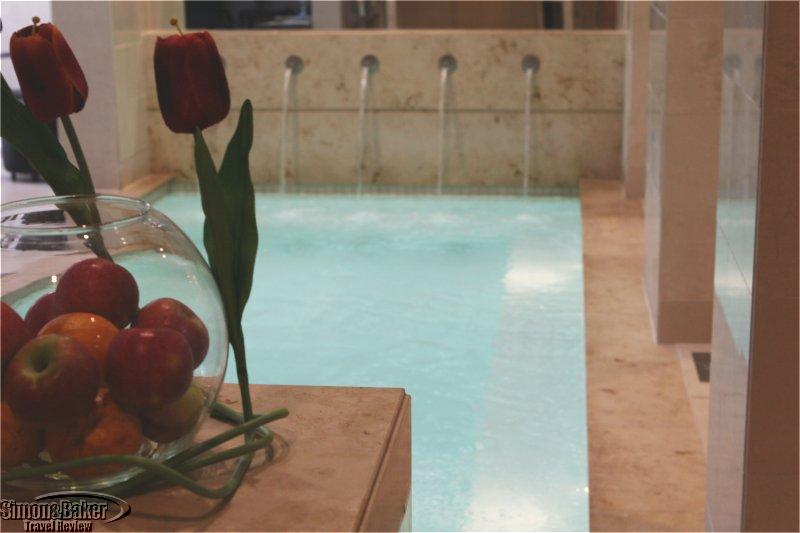
by Editor | Nov 1, 2006 | Africa, Johannesburg, Simon and Baker Travel Review, South Africa
What could be better after 48-hours of travel than an afternoon of spa pampering? Massages, body wraps and scrubs, facials, manicures, and pedicures all sounded appealing. The Renaissance Spa in the Michelangelo Towers next to the famous Nelson Mandela Square shopping arcade was a short cab drive from my Melrose boutique hotel. It offered a myriad treatment options and spa packages, as well as tanning and hair removal so I was sure I would find something I liked.
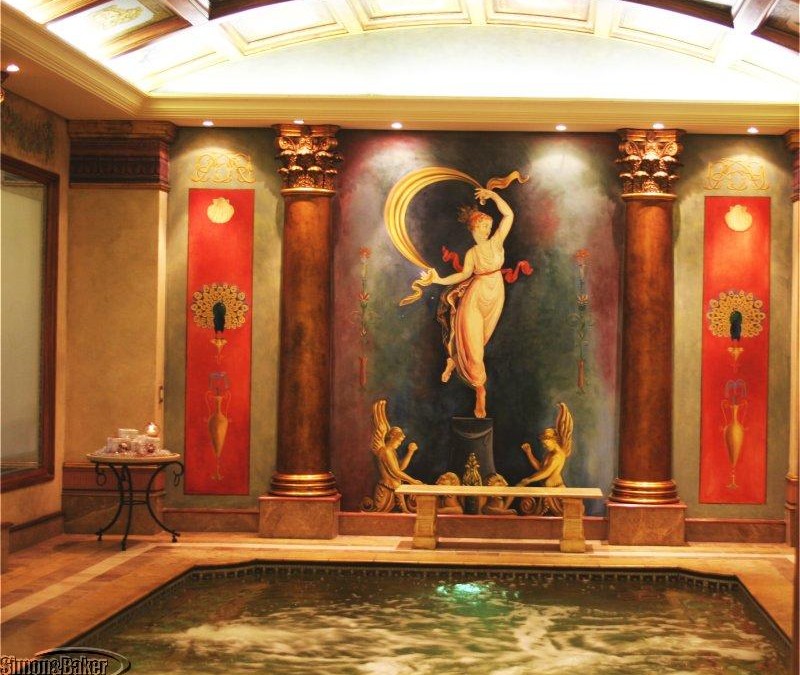
by Editor | Nov 1, 2006 | Africa, Johannesburg, Simon and Baker Travel Review, South Africa
When I found out I had an eight hour layover in Johannesburg before boarding my international flight to Europe I booked spa treatments at Octavia’s, which is located in a luxury hotel a stone’s throw away from the Johannesburg airport. That was a fabulous way to kill time before my long evening flight.
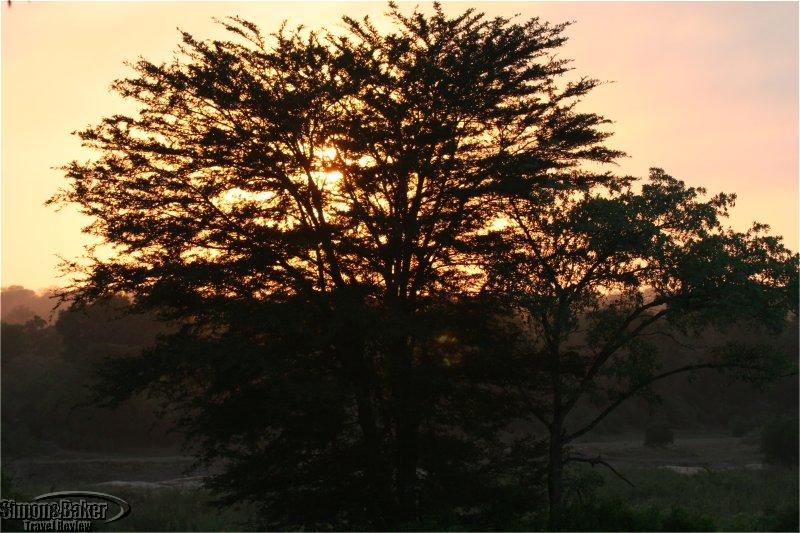
by Editor | Nov 1, 2006 | Africa, Kruger, Sabi Sand, Simon and Baker Travel Review, South Africa
In the early 1900s, several attempts were made to substitute Mala Mala’s wildlife with cattle farming. A losing battle with lions and a constant struggle with wildlife, diseases and drought proved that it was not a viable option. Established in 1929 by Wac Campbell as a preservation area and legacy for his children, by the 1950s it had become a game viewing property. In 1964, the Rattray family purchased the property and upgraded the accommodations to a 1950s style luxury standard. Now part of a conservation gene pool of 5.5 million acres of South African lowveldt, it shares 19 kilometers (12 miles) of border with the Kruger National Park in one of the prime game viewing areas of the world.

by Editor | Nov 1, 2006 | Simon and Baker Travel Review
Millions and millions of chocolate bubbles swirled at my feet; foaming in a chocolate lover’s fantasy. In the dimly lit room, rose petals and candles transported me to an imaginary cloud of soothing silence; while chocolate morsels and chocolate liquor tempted my sweet tooth during the Cybele Spa 45-minute Chocolate Balneotherapy. Prior to that, I enjoyed a back and massage with hot stones and 15-minute stopover in the spa’s oriental style steam room with a garden view. My final treatment was a scalp massage right before the spa closed for the day.
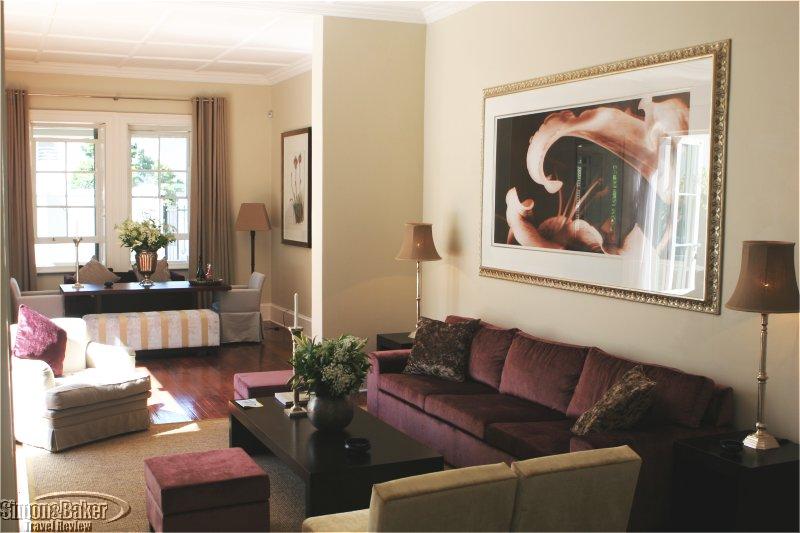
by Editor | Nov 1, 2006 | Africa, Cape Town, Simon and Baker Travel Review, South Africa
This small family owned luxury property located in the heart of Cape Town was a jewel. Renovated from a home that had fallen into hard times, the property was carefully spruced up and decorated to accent its assets. The 200 square meter Owner’s Villa, my favorite part of the property, was a two-story one bedroom villa next to the main building. Downstairs, it had its own entrance, social area, fully equipped kitchen, private plunge pool, entertainment center, high speed Internet access and terrace. Upstairs, there were comfortable and attractive sleeping quarters for a couple. Someone dedicated much time and care to ensure Villa guests a good looking, roomy and well appointed place to retreat from the city’s excitement while remaining within easy reach of all the Cape Town fun.
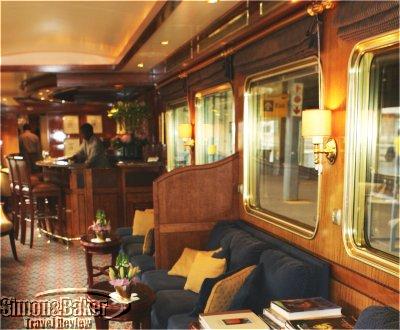
by Editor | Nov 1, 2006 | Africa, Cape Town, Johannesburg, Simon and Baker Travel Review, South Africa
A trip on South Africa’s famous The Blue Train is the dream of a lifetime for many. On board, travelers celebrate birthdays, anniversaries, honeymoons or just long planned trips to South Africa. The 1,600 kilometer train ride affords guests the opportunity to see some of the South African countryside while basking in luxurious accommodations and enjoying appetizing meals and premium service. The Blue Train offered guests an out of the ordinary ride in luxurious comfort and style that they could reminisce over for years.
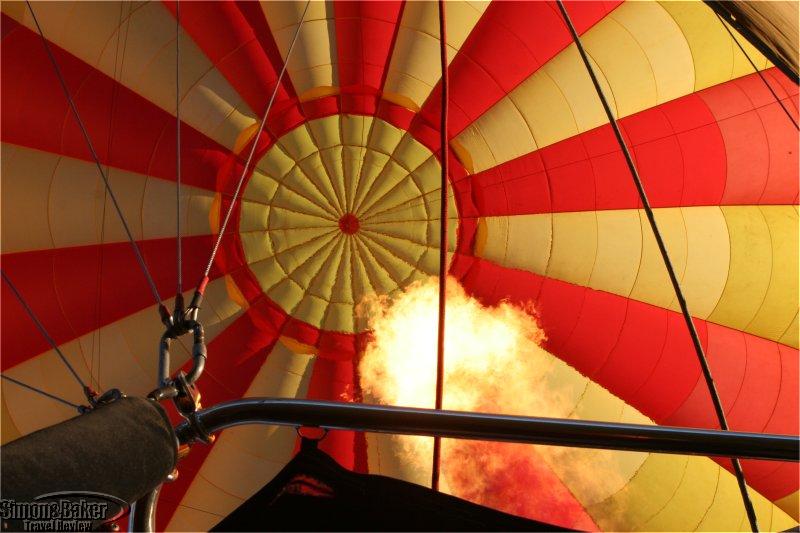
by Editor | Nov 1, 2006 | Africa, Johannesburg, Simon and Baker Travel Review, South Africa
It was 3:45 a.m. when my hotel room phone rang the day after my arrival in South Africa. A few minutes later I dashed out of the room in a whirl of sweaters, full of excitement and anticipation. What had me energized at 4 a.m.? A balloon ride in the Cradle of Humankind. A half hour taxi ride later I found myself at the entrance of a hotel in the outskirts of Johannesburg greeting Mary Harrop, wife and co-owner of Bill Harrop’s Original Balloon Safaris. From there Mary described our upcoming flight with enthusiasm while we drove in a minivan to the picturesque Kloofricht Lodge from which we would be launching the balloon. We were only about 60 kilometers from Johannesburg and yet it felt like a world apart. Mary explained that the area boasted some of the safest and most reliable ballooning weather in the world.
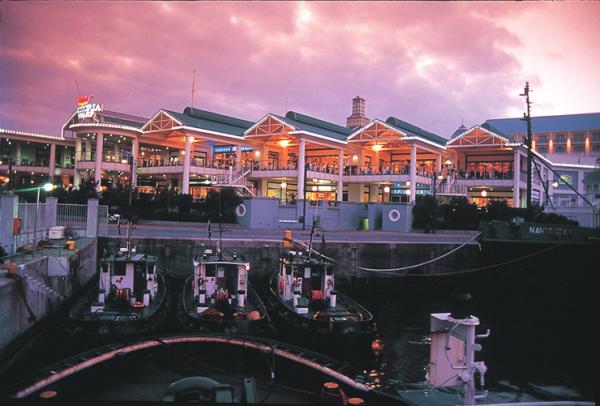
by Editor | Nov 1, 2006 | Africa, Cape Town, Simon and Baker Travel Review, South Africa
: Baia was near full when we arrived for dinner around 8 p.m. We had discovered the restaurant, tucked inside the large mall, on a previous visit and wondered how it faired in our absence. We sat at a comfortable table in the outer deck facing the waterfront with a sigh of relief (glad we had thought to make reservations in advance). Having spent the day driving to Cape Town and running errands in preparation for our departure on safari we had no time for lunch. Dinner, when it arrived, was most welcome – and delicious.
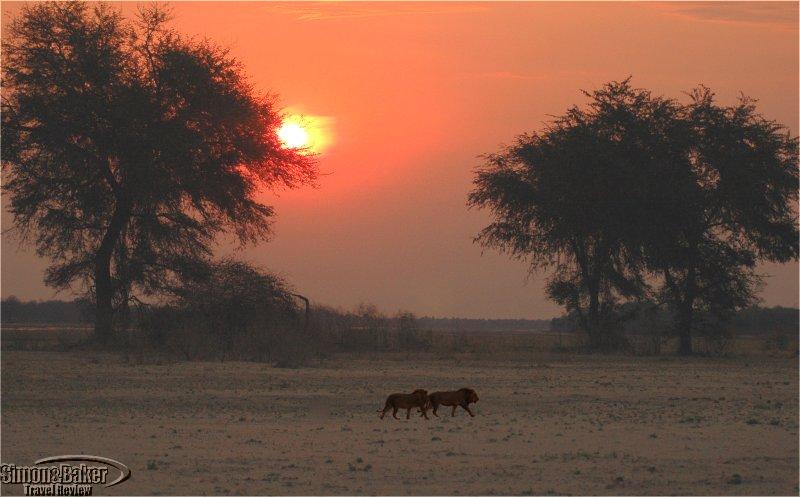
by Editor | Oct 1, 2006 | Africa, Simon and Baker Travel Review, South Luangwa, Zambia
The South Luangwa National Park is a 3,500 square mile stretch of pristine wilderness hidden away in the north-eastern corner of Zambia. The eastern border of the park follows the Luangwa River as it makes its convoluted way toward the Zambezi, leaving behind a patchwork of oxbow lakes and lagoons. According to experts, this remote valley, with its ruggedly varied landscape of savanna and forest, has one of the highest concentrations of game in Africa. It is host to approximately 60 animal and 400 bird species, including most of the Big Five.

by Editor | Oct 1, 2006 | Africa, Simon and Baker Travel Review, South Luangwa, Zambia
Overlooking a tranquil oxbow lagoon, the luxurious Mfuwe Lodge was one of only two permanent, year-round lodges within the 3,500 square miles of pristine wilderness of the South Luangwa National Park. In addition to the large lobby and reception area, the striking open-plan main lodge housed a lounge, bar and dining room under a soaring thatched roof. The space was anchored at both ends by spectacular matching stone fireplaces. A wide boma (timber deck on stone pillars) overlooked the lagoon, as did the swimming pool. Both were ideal spots to enjoy the constant parade of game that visited the lagoon.
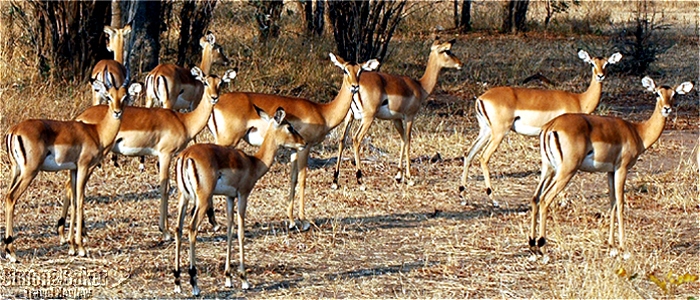
by Editor | Oct 1, 2006 | Africa, Simon and Baker Travel Review, South Luangwa, Zambia
It was already well into the evening when I arrived at Kuyenda, a remote bush camp in the South Luangwa National Park. It was my first destination in the park, at the end of a lengthy journey from the United States, and the start of my maiden safari. I immediately felt transported to a timeless Africa I had expected to be long vanished, other than in my imagination! The camp was nestled in a grove of giant trees, facing a grassy meadow that gently sloped down about three hundred feet to the edge of the Manzi River. It consisted of four spacious guest rondavels, traditional South African circular huts built entirely of local wood, reed and thatch. They were clustered around a thatch-roofed, open-wall dining and lounge area. The entire camp was bathed in the soft glow of oil lanterns, as was the long dinner table invitingly set at the edge of the dry riverbed. The darkness echoed with a rich cacophony of sounds that hinted at abundant wildlife nearby.
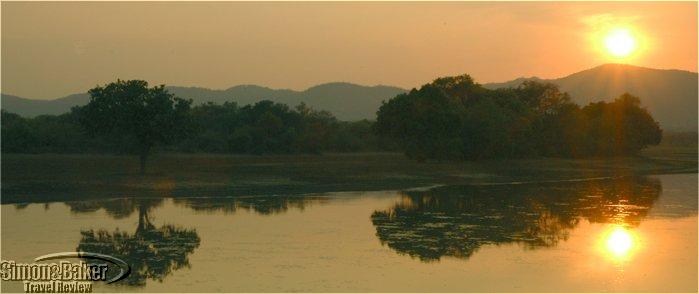
by Editor | Oct 1, 2006 | Africa, Simon and Baker Travel Review, South Luangwa, Zambia
Tucked in the shade of ancient ebony trees at the apex of a permanent oxbow lagoon, Chindeni was a verdant oasis in the parched immensity of the South Luangwa National Park when I visited in the final weeks of the dry season. Everything about the camp exuded welcoming abundance, from the warm reception of the staff to the comfort of the tented accommodations and the profusion of game around the lagoon. Superb vistas of the Nchendeni Hills filled the horizon. The inviting common areas consisted of spacious, thatch-roofed platforms, raised high above the lagoon, and cleverly designed around the trunk of a giant ebony tree that contributed both a sculptural quality and cooling shade to the structure. It included a long viewing deck that was a perfect place to enjoy an early morning breakfast while contemplating the spectacular sunrise over the hills.

by Editor | Oct 1, 2006 | Africa, Simon and Baker Travel Review, South Luangwa, Zambia
Chamilandu was the most intimate of all the bush camps I visited inside the South Luangwa National Park. It consisted of three guest chalets perched on eight-foot high platforms. Built in the local style with a contemporary flair, each chalet was composed of three walls sheltered by a peaked thatch roof. The fourth side of each rectangular structure was fully opened to a private deck that offered a startling 180 degree view of the Luangwa River, against the distant backdrop of the Nchendeni Hills. The guest chalets were only a few steps away from the spacious dining and lounging hut that was a welcoming gathering spot for all common activities.
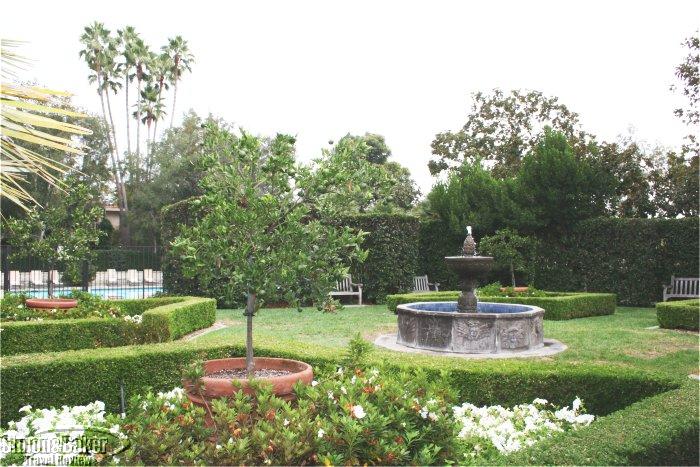
by Editor | Sep 1, 2006 | California, North America, Simon and Baker Travel Review, United States
The Rancho Bernardo Inn was a short drive east from the coastal highway in San Diego and a world away in style and pace. Relaxed and verdant, the property’s golf courses and gourmet restaurant were the center of attraction in an otherwise quiet residential neighborhood.
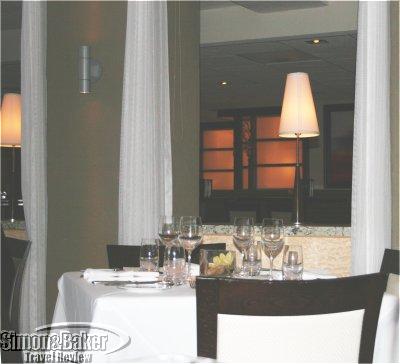
by Editor | Sep 1, 2006 | California, North America, Simon and Baker Travel Review, United States
Most people don’t ordinarily think of a shopping arcade as a location for a gourmet dinner. And yet, one of the better gourmet meals I have enjoyed in California was at The Dining Room at Jack’s in a shopping arcade in tony La Jolla. Once inside, I forgot I was in a mall and focused on the menu, modern décor, and lively ambiance with subdued light. Although there was a constant flow of happy hour guests at the bar adjacent to the dining area where I was seated, the noise level was loud enough to be interesting without being bothersome.
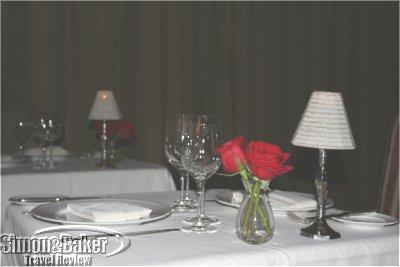
by Editor | Sep 1, 2006 | California, North America, Simon and Baker Travel Review, United States
Tucked away in a residential golf neighborhood in northeastern San Diego is an outstanding restaurant led by a dynamic, exacting and talented young chef with immense culinary promise.
















































